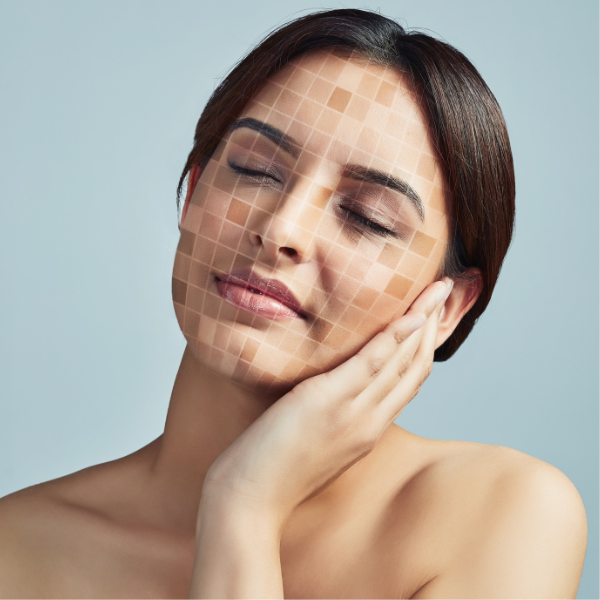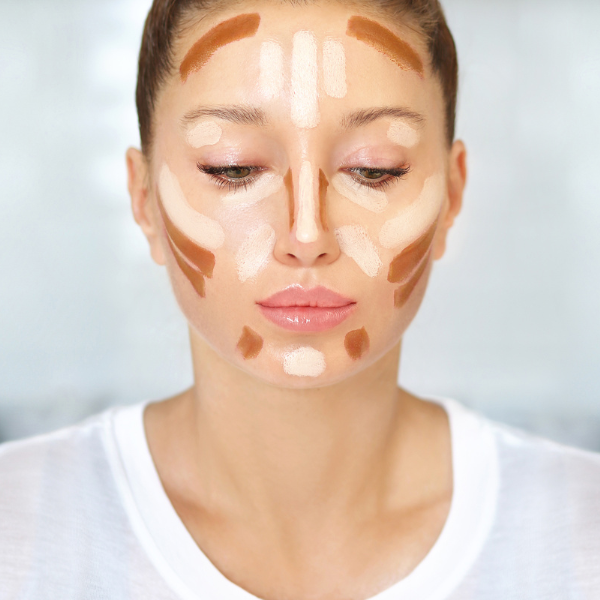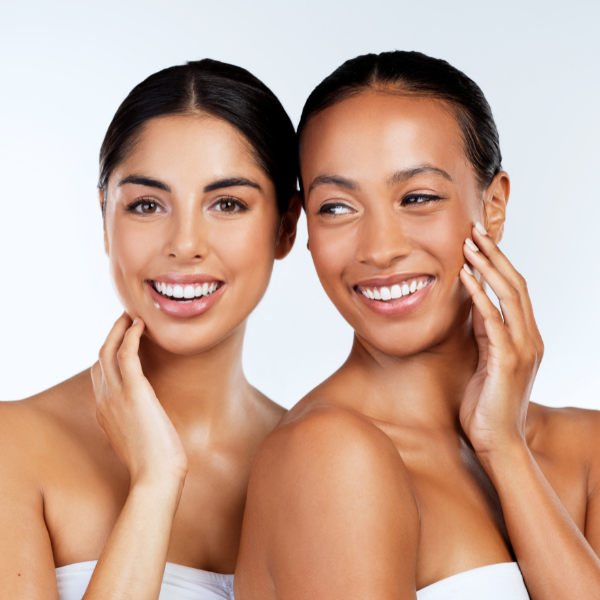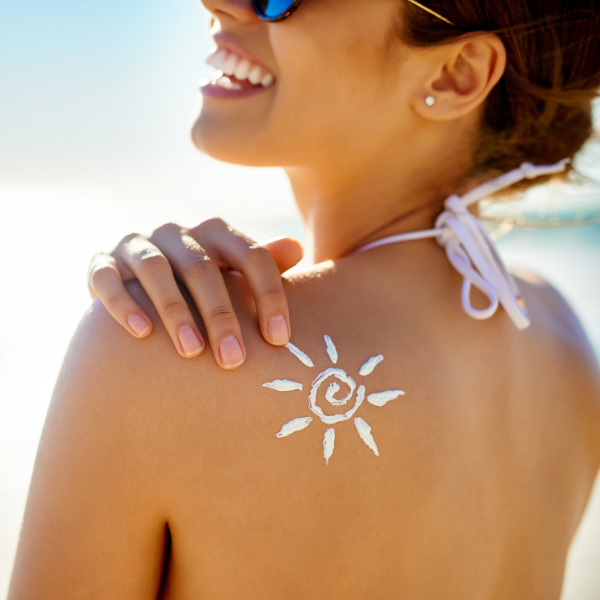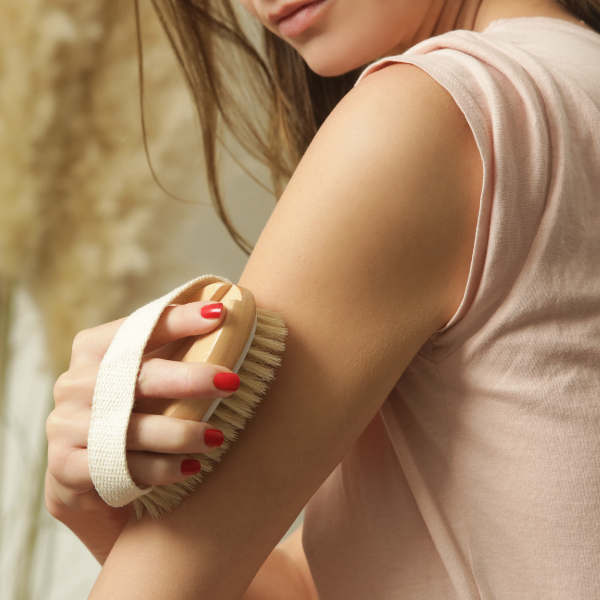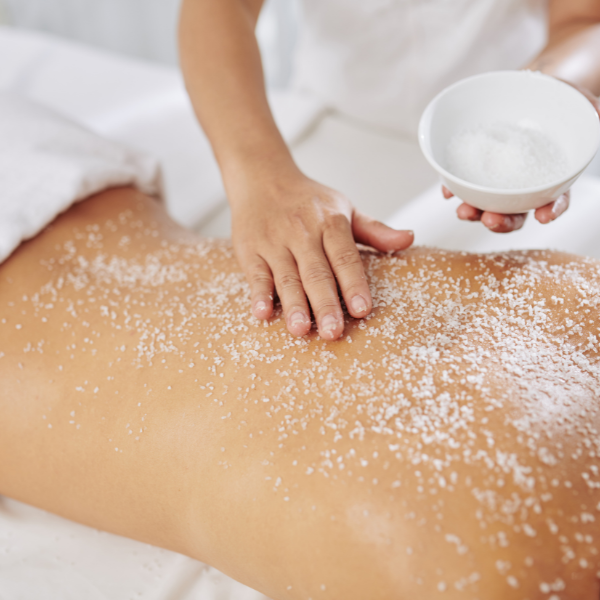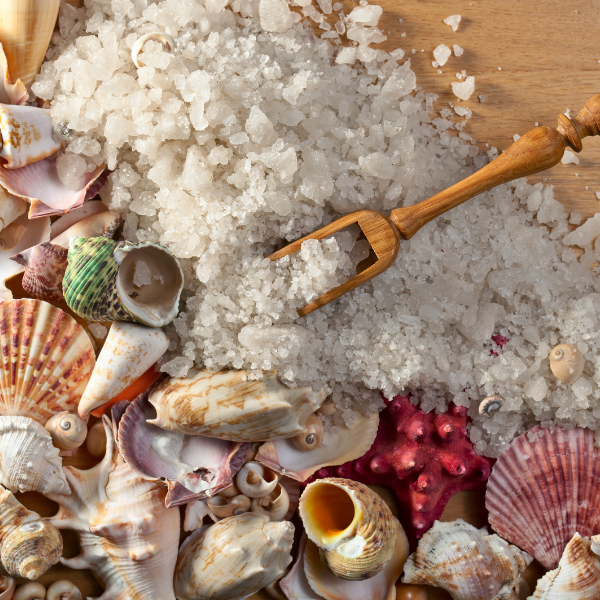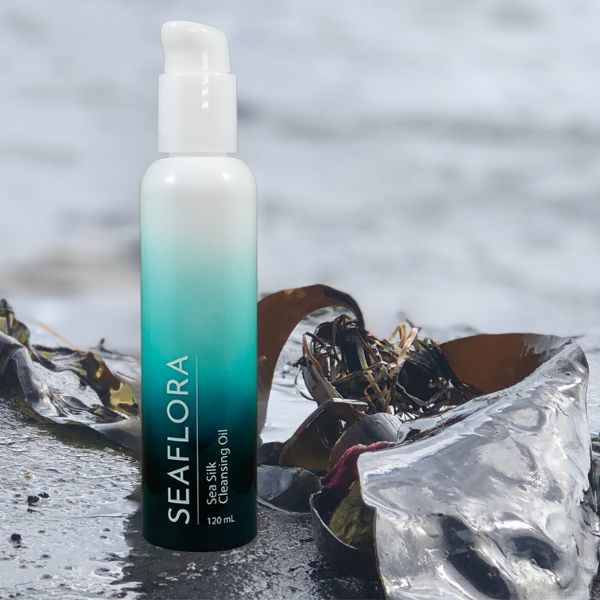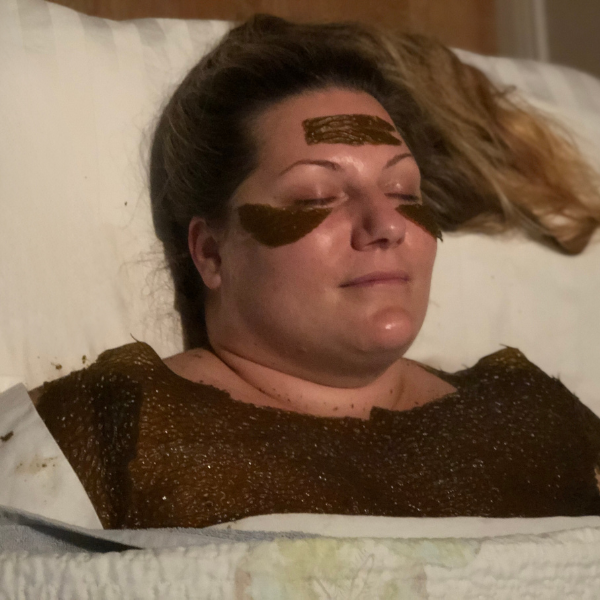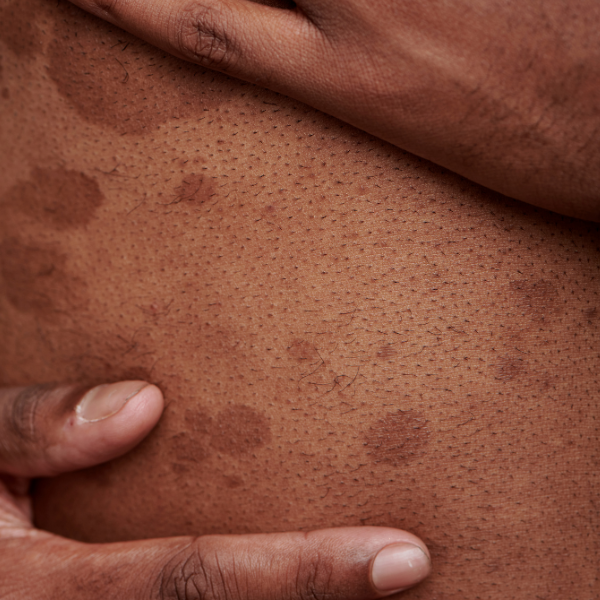Skin Complexion: How To Fix Uneven Skin Tone
Are you tired of trying to cover up your uneven skin tone? Have the expectations of excellent marketing left you feeling disappointed about your own complexion? Let’s talk about your skin complexion, and how to naturally even out and brighten your complexion.
Complexion can be characterized by factors such as texture, tone, and overall appearance. For example, some people have smooth and even skin, while others have rough and unclean skin. In 2023 with in AI, photography and editing, you may be overly critical of your own natural complexion. However, age, lifestyle factors such as diet and exercise, and environmental factors such as pollution and climate can all have an effect on your complexion. This article will show you many natural inexpensive ways to help reduce uneven skin tone on your face and body.
Skin Complexion Types
Complexion refers to the natural colour and appearance of a person’s skin. It is determined by the amount of melanin, a pigment that gives skin its colour, that is present in the skin. Melanin is produced by specialized cells called melanocytes in the epidermis of the skin.
The amount of melanin in a person’s skin is determined primarily by genetics, but can also be affected by factors such as sun exposure, hormonal changes, and skin damage. People with more melanin have darker skin and people with less melanin have lighter skin.
In addition to colour, skin tone is also characterized by factors such as texture, tone, and overall appearance. For example, some people have smooth and even skin, while others have rough and unclean skin. Complexion can also be affected by age, lifestyle factors such as diet and exercise, and environmental factors such as pollution and climate.
The 6 Common Complexions:
- Fair: This refers to skin that is very light in colour and may burn easily in the sun.
- Light: This refers to skin that is light in colour, but not as pale as fair skin. It may still burn in the sun, but not as quickly or easily.
- Medium: This refers to skin that has a medium tone, usually with some natural colour or a slight tan. It may still burn in the sun, but tends to tan more easily.
- Olive: This refers to skin that has a greenish or yellowish undertone, often with a slight tan. It may still burn in the sun, but tends to tan more easily.
- Tan: This refers to skin that is naturally darker than olive or has been tanned by the sun or artificial means. It may still burn in the sun, but is less likely to do so than lighter skin.
- Dark: This refers to skin that is very dark in colour and may not burn in the sun at all.
What is A Normal Skin Tone vs An Uneven Skin Tone?
Uneven skin tone refers to skin that has areas of discolouration or hyperpigmentation, which can appear as patches, blotches, or areas that are darker than the surrounding skin. This can be caused by a number of factors, including sun exposure, hormonal changes, aging, genetics, and skin inflammation.
A normal complexion, on the other hand, refers to skin that is even and even in colour and texture. Normal skin tone varies from person to person and can be influenced by factors such as genetics, sun exposure, and lifestyle choices such as smoking and diet.
It is important to note that uneven skin tone is a common condition and many people experience some degree of discolouration or pigmentation on their skin. However, if you are concerned about uneven skin tone or other skin problems, it is recommended that you consult a dermatologist or other medical professional. It helps us identify and recommend appropriate treatment options to help you achieve your desired results.
What Causes Uneven Skin Tone?
Instead of layering makeup on your skin, let’s get to the root causes of uneven complexions. Hyperpigmentation, or uneven skin tone with dark circles, can occur due to skin irritation or inflammation. The resulting patches of light and dark spots, are not actually caused by simply aging. Inflammation, wounds, blemishes and post inflammatory hyperpigmentation, can cause more oxidation and pigmentation than normal. In addition, vitiligo can be associated with pigmentation of dark spots on the skin, which also causes uneven skin tone and color.Inhomogeneity Here are some of the main causes of uneven skin tone:
Sun Exposure
UV rays from the sun can cause the skin to produce more melanin, resulting in dark spots or dark patches on smoother skin.
Hormonal Changes
Hormonal changes during pregnancy, menopause, or while taking birth control pills can cause the dark spots or patches on the skin.
Dead Skin Cells and Uneven Skin Tone
Dead skin cells can contribute to uneven skin and to uneven skin or even skin tone too. When they accumulate on the surface of the skin, they can cause the skin to look dull, dry, and rough. Dead skin cells can also clog pores and lead to the formation of blemishes and to uneven skin or even skin tone too.
Aging
As we age, the skin loses its elasticity and the skin aging and becomes thinner, making it more susceptible to discolouration.
Post-inflammatory Hyperpigmentation
This is a condition where the skin darkens after an injury sun damage or inflammation, such as acne or a rash.
Genetics
Some people are simply more prone to uneven skin tone due to their genetics.
Skin Conditions
Certain skin conditions, such as eczema, psoriasis, or rosacea, can cause discoloration and an otherwise uneven skin tone, or even skin tone sometimes.
Lifestyle Factors
Poor diet, lack of sleep, stress, and smoking can also contribute to uneven skin tone. It’s important to identify the underlying cause of your own the uneven tone of skin the uneven tone of skin tone in order to effectively treat it.
What Causes Melanin Production and Hyperpigmentation?
Dark spots develop underneath the skin and are often the tip of the iceberg with several cells that “brewed” and formed in the skin. Prevention is equally important to improving uneven compexion.
Here’s a summary of what the books Boundless and The Mineral Fix say about the relationship between skin discolouration and high blood sugar, mineral deficiency, and other health factors:
High blood sugar and Insulin Resistance
According to Boundless by Ben Greenfield, high blood sugar can cause skin discoloration due to a process called glycation, where sugar molecules bind to proteins in the skin, causing them to become stiff and inflexible. This can lead to a buildup of pigments in the skin, resulting in a darker or uneven skin tone. The book recommends maintaining healthy blood sugar levels through diet and exercise to help prevent uneven skin tone and other health issues.
Insulin resistance is prominent in our society today. The carbs we eat turn to sugar, the beverages offered to us are syrup water, and we all know sugar is absolute poison to our body. What you might not know is that those little red moles, the darkening of the skin on the back of the neck, arm pits, groin area, and lower back could be symptoms of insulin resistance. Excess insulin causes skin cells to reproduce at a rapid rate. For people with skin that has more pigment, these new cells have more melanin. This increase in melanin produces a patch of skin that’s darker than the skin surrounding it.
Mineral deficiency
The Mineral Fix by Dr. James DiNicolantonio explores the role of mineral deficiencies in various health conditions, including skin discolouration. The book explains that minerals such as zinc, copper, and iron are important for overall skin health, and the production of melanin, the pigment that gives skin its colour. Deficiencies in these minerals can lead to skin discolouration and other serious skin health issues. The book recommends consuming a balanced diet rich in minerals, or taking supplements like Vitamin C if necessary, to help maintain optimal skin health.
Both books note that skin discolouration can be caused by a variety of other health factors, including hormonal imbalances, liver dysfunction, and autoimmune disorders. Boundless recommends addressing these underlying health issues through lifestyle changes, supplements, and medical treatments, while The Mineral Fix emphasizes the importance of minerals in supporting overall health and addressing underlying nutrient deficiencies that may contribute to skin discolouration.
Natural Remedies For A Bright Even Skin Tone
With knowledge about skin type, it’s possible to treat the uneven skin tone and correct uneven skin tone. How do we start?
certain types of seaweed contain bioactive compounds that have been found to inhibit the enzyme tyrosinase, which plays a key role in the production of melanin. Melanin is the pigment that gives color to our skin, hair, and eyes, and overproduction of melanin can lead to hyperpigmentation or uneven skin tone.
One of the most well-known bioactives found in seaweed is phlorotannin, which has been shown to inhibit tyrosinase activity and reduce melanin synthesis. Other compounds found in seaweed, such as fucoidan and alginate, have also been found to have skin brightening and anti-pigmentation effects.
Decades of studies have also suggested phlorotannins, fucoidan, and fucoxanthin may have anti-inflammatory, antioxidant, and anti-tyrosinase effects that protect the skin and prevent premature aging.
Sun Damage
It is not skin injury primarily caused by sun exposure as melanin is released and protects skin from sun damage. Short-term, unprotected sun exposure can damage and the tanning develops dark spots quickly. Tan itself is a sign of a healthy skin and sprain skin irritation. But the sun damage can cause brown spots as well as uneven tan. In addition to sun damage, some have forgotten about ultraviolet A radiation that penetrates the skin barrier and causes permanent skin damage. Many recent studies confirm that UV exposure can be exacerbated by pigmentation.
Dry Skin
Dry skin can often lack sebum and can crack easily. Deteriorated, damaged skin may cause discoloration and can become patchy or ashes. You should moisturize and hydrate the skin as much as possible for a healthier skin. You can help you drink plenty of fluids during the day and you can also invest in sunscreens and moisturizers in your daily routine.
Free Radical Damage
Free radicals can contribute to uneven skin tone by causing oxidative stress, which damages cellular structures like DNA, proteins, and lipids. This damage can lead to changes in melanin production, resulting in uneven skin pigmentation.
Melanin is the pigment responsible for skin colour, and its production can be affected by free radicals. Free radicals can stimulate the production of an enzyme called tyrosinase, which is involved in the synthesis of melanin. This can cause overproduction of melanin in certain areas, leading to hyperpigmentation and uneven skin tone.
Furthermore, free radicals can also cause inflammation, which can further contribute to uneven skin tone. Inflammatory cells release substances that can stimulate the production of melanin, leading to more hyperpigmentation. Using a product rich in CoQ10 and antioxidants can help prevent and heal free radical damage.
Treating Any Underlying Conditions
Preventative measures and a great skin care routine can reduce hyperpigmentation. For a thorough treatment of any underlying condition, patients should seek professional medical dermatologists. Dermatologists may as skin care specialist suggest the right treatment. Wearing sunscreen helps keep your skin hydrated and protected as you treat the condition but nothing is better than physical shields like sun hats.
Why Is My Body Skin Tone Uneven?
- Hormonal changes during pregnancy, menopause, or due to certain medical conditions can cause uneven skin tone.
- As we age, our skin may develop dark spots, age spots, or other forms of hyperpigmentation.
- Certain skin types may be more prone to uneven skin tone due to genetics.
- Post-inflammatory hyperpigmentation occurs when the skin produces more melanin in response to inflammation or injury, such as acne, cuts, or burns.
- Certain medical conditions, such as eczema or psoriasis, can cause uneven skin tone.
- Lifestyle factors such as smoking, poor diet, lack of sleep, and stress can also contribute to uneven skin tone.
Insulin resistance is a medical condition where the body’s cells become less responsive to insulin, a hormone that regulates blood sugar levels. While insulin resistance is primarily associated with diabetes and metabolic disorders, some research suggests that it may also contribute to skin issues such as hyperpigmentation and uneven skin tone.
Insulin resistance can cause an increase in the production of insulin-like growth factor 1 (IGF-1), which has been shown to stimulate the production of melanin, the pigment that gives skin its color. This can lead to hyperpigmentation and uneven skin tone in areas of the body where insulin resistance is present, dark spots such as around the neck, underarms, and groin.
However, it’s important to note that more research is needed to fully understand the relationship between insulin resistance and skin health. If you suspect that insulin resistance may be contributing to your skin issues, it’s important to consult with a dermatologist or healthcare professional who can help determine the underlying cause and recommend appropriate treatments.
How Can I Even Out My Whole Body Skin Tone Naturally?
It’s possible that applying a kelp gel to your skin could help to even out your skin tone, but it’s important to note that not all seaweed-based products are made equally. Many companies use algae and other high quality ingredients as “marketing ingredients”. Looking at labels is more important than ever!
Certain types of seaweed have been shown to contain bioactive compounds that can inhibit excessive melanin production and dramatically improve skin tone, cellulite, and more. Knowing what type of seaweed is being used, whether it is fresh or dried powder, and the concentration is important. The concentration of these compounds in the kelp, the stability of the bioactives in the gel, and how well the gel is absorbed by the skin are all factors in determining which product to choose.
In addition, if you’re considering making your own seaweed gel at home, it’s important to be cautious and follow safe food handling practices to avoid contamination. Use fresh seaweed, not degrading washed up compost on the beach. To ensure sustainable harvesting, imagine you are just giving the seaweed a little hair cut.
Add Vitamin C To Your Skincare Routine
Now, the treatment is effective and penetrates the skin much more efficiently than laser treatment before. Apply an antioxidant serum for the brighter complexion. the Vitamin C serum which is a powerful antioxidant protecting your face against free radical damage.
Vitamin C is an antimicrobial and potent antioxidant, which is also good for reducing hyperpigmentation as it inhibits melanin formation in the skin and reverses free-radical damage for skin regeneration. Topical Vitamin C is easy when you use Seaflora’ “Potent Sea Kelp” products as they utilize Magnesium Ascorbyl Acid, Vitamin C Ester as well as the Vitamin C from the seaweeds themselves.
Cater Your Skincare Routine to Your Skin Type
Pick the right product for your specific skin type. The more custom to your routine is to your skin type the better. Although your goal is to reduce discolouration and even your skin tone you can easily get acne by using the wrong product.
Try A Product With Niacinamide
Niacinamide exploded last year into an increasingly popular ingredient by 2021. These are not going away until 2024. Niacinamide is a form of B3 that helps to restore hydration and soothe skin inflammation too. What does not work?! – ” It is a great complement to other products and is often included with the skin brightening ingredients. Look for products that contain vitamin B5, Hyaluronic Acid and Niacinamide, like Seaflora Skincare products. To further improve skin clarity and hydration, try this organic seaweed body mask which basically acts as a facial for the whole body.
Cleanse & Moisturize Daily
Cleansing the skin with a gentle cleanser is recommended twice daily. It is absolutely essential to keep your skin hydrated, clean and moisturized for optimal dermal function. Aestheticians also recommend exfoliating twice a week to deep clean the pores. Maintaining your skin is very important in maintaining a youthful, glowing complexion. Using any Seaflora cleanser also boosts collagen production, hyaluronic acid production and increases cell growth, thus helping counter the effects of sun exposure and hormonal flare-ups.
Avoid Excessive Sun Exposure
Exposure to UV rays for longer can be associated with hyper-pigmentation disorders, skin cancer and rosacea pigmentations. Find shade at high hour to prevent sun damage and wear sunscreen outside. Sun exposure can lead to uneven complexions through a process known as melanogenesis. When the skin is exposed to UV radiation from the sun, it triggers the production of melanin, the pigment that gives skin its colour. Melanin is produced by specialized cells called melanocytes, which are located in the skin’s epidermis.
The purpose of melanin production is to help protect the skin from further damage caused by UV radiation. However, if the skin is exposed to too much UV radiation, it can cause the appearance of dark spots or patches on the skin.
The Best Products for Uneven Skin Tone
Organic, natural and cruelty free, Seaflora products are beneficial on all skin types that experience uneven skin. Use any or all of our suggested over the counter supplements as part of the morning and night skin care routine to correct uneven skin tone. We believe seaweed, salt, and a healthy lifestyle are the best ingredients to a glowing, youthful complexion.
Exfoliate Your Skin Regularly for Even Skin Tone
Exfoliation helps remove the skin’s dead skin cells, thereby providing new, more even skin tone. Regular exfoliation will improve skin texture and sometimes even fine stretch marks over time. Slough off dead skin cells and promote cell turnover, to improve skin texture and even out skin tone. Here are some tips for exfoliating the body:
Dry brushing:
Dry brushing is a gentle way to exfoliate the skin using a natural bristle brush. Before showering, use the brush to gently brush the skin in circular motions, starting at the feet and working upwards towards the heart. This can help to improve circulation and promote lymphatic drainage, as well as remove dead skin cells.
Body scrubs:
Body scrubs can be made using natural ingredients such as sugar, salt, or coffee grounds. Mix the scrub with a carrier oil such as coconut or almond oil, and apply to damp skin in circular motions. Rinse off with warm water and pat dry.
Exfoliating gloves or mitts:
Exfoliating gloves or mitts can be made from natural materials such as sisal, loofah, or flax. Use the glove or mitt to gently massage the skin in circular motions while in the shower or bath.
Sand:
Sand can be used as a natural exfoliant for the body. Visit a beach or sand dune, and gently rub the sand onto the skin in circular motions. Sea Sand is the best because the ebb n flow of the ocean perfectly spheres the granules.
Flax back strap:
A flax back strap can be used to gently exfoliate hard-to-reach areas such as the back. Wet the strap and apply a small amount of body wash or soap, and use it to gently scrub the skin in circular motions.
Remember to be gentle when exfoliating, especially if you have sensitive skin. It’s also important to avoid over-exfoliating, as this can cause irritation and dryness. Aim to exfoliate no more than once or twice per week, and always follow up with a moisturizer to help soothe and hydrate the skin.
Supplements For A Flawless Complexion As You Age
Dryness in the face and skin looks dull and leads to premature skin aging. Although you hear how bad salt is all the time, it is very important to our health and promotes a healthy complexion. Not all salts are equal, and that is the most important note to remember. Sea Salts are the best and if you can’t get good sea salt than you should try Trace Mineral Drops.
Kelp and dulse are types of seaweed that have been traditionally used in skincare treatments due to their anti-inflammatory and antioxidant properties. They contain several bioactive compounds that have been shown to help regulate melanin production and improve skin tone.
One of the key bioactives found in seaweed is fucoxanthin, which has been shown to inhibit the production of tyrosinase, the enzyme responsible for melanin production. This makes seaweed a popular ingredient in skincare products that aim to brighten and even out skin tone.
Resveratrol is a polyphenol found in grapes, red wine, and some fruits that has been shown to have antioxidant and anti-inflammatory properties. Some research suggests that resveratrol may also help to improve skin tone and reduce the appearance of hyperpigmentation by inhibiting the production of tyrosinase.
Lifestyle Tips To Reduce Uneven Skin Tone
Adopt these 3 easy healthy lifestyle practices that help even out and brighten your skin tone.
- Protect your skin and avoid prolonged exposure. As they say, too much of a good thing is bad.
- Stay hydrated by drinking living water and maintain a healthy diet boosted with supplementation if needed.
- Exfoliate regularly, it is a must!
References:
If you’re interested in learning more about the skin benefits of seaweed, here are some resources you might find helpful:
“Seaweed: A Novel, Natural Source for Anti-Aging Skin Care” (Journal of Applied Phycology)
“Skin Brightening and Anti-Pigmentation Effect of Seaweed Extracts” (Cosmetics)
“Bioactive Compounds from Marine Macroalgae and Their Hypopigmenting Potential” (Marine Drugs)
“Marine Algae: A Source of Novel Antioxidants and Anti-Aging Compounds” (Journal of Applied Phycology)
“Seaweeds and Their Biomolecules as Skincare Ingredients: Challenges and Opportunities” (Marine Drugs)
The American Academy of Dermatology website has a section on hyperpigmentation that provides information on causes, treatment options, and prevention tips.
The Environmental Working Group website has a searchable database of skincare and cosmetic products that can help you choose products that are free from potentially harmful ingredients.
The National Institutes of Health has a database of dietary supplements, which can be helpful for researching supplements that may be beneficial for skin health.
Book Recommendations:
“The Skin Type Solution” by Leslie Baumann:
“Beautiful Skin of Color: A Comprehensive Guide to Asian, Olive, and Dark Skin” by Jeanine Downie
“The Little Book of Skin Care” by Charlotte Cho
“The Complete Guide to Seaweed” by Dr. Prannie Rhatigan
“The Herbal Medicine-Maker’s Handbook: A Home Manual” by James Green

